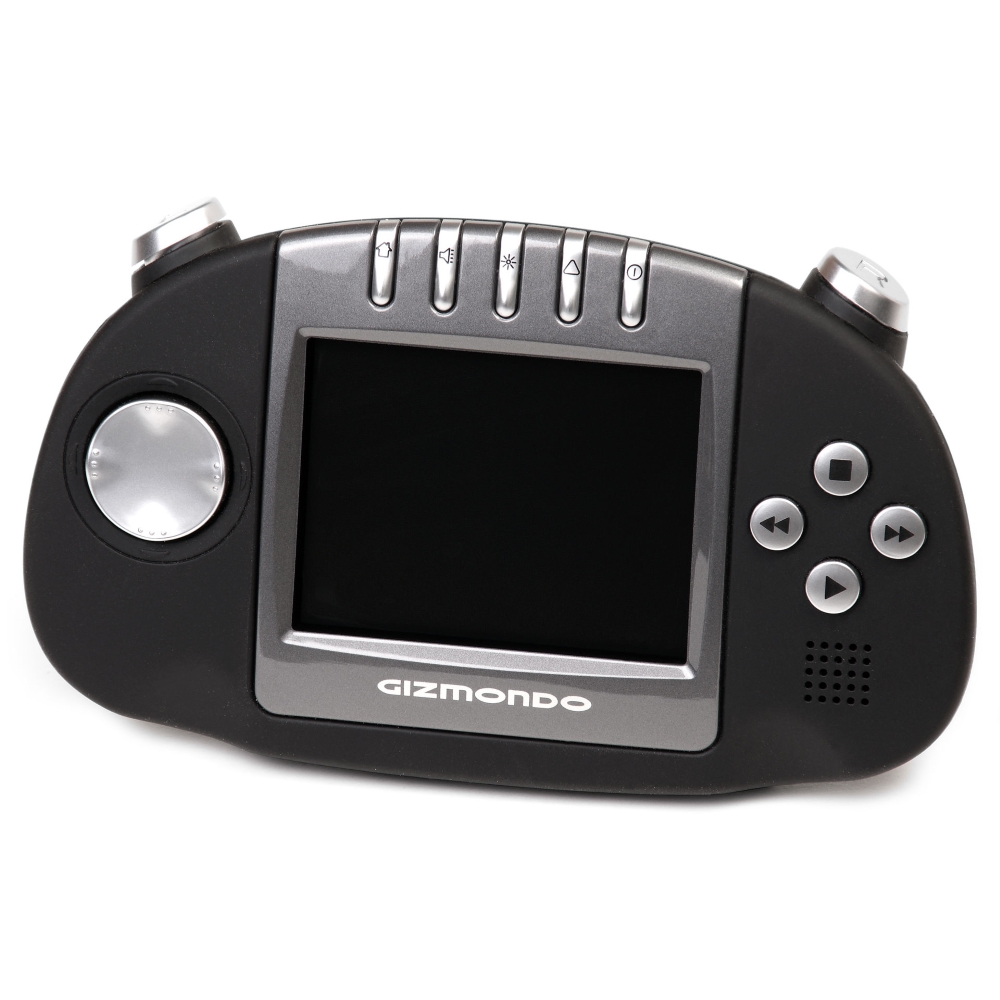|
History
Part 1 – The Buyout
The story of the Gizmondo is a shady one. In the forefront of this story is Stefan Eriksson, the head of a Swedish mafia group known as Upssala Mafia who was brought as co-executive of Tiger Telematics in 2002. But the story of Gizmondo is even darker than what it appears.
Before plunging in the heart of the matter, we need to talk about Floor Décor LLC, the mother company of Gizmondo. The story behind it is a fairly complex series of buyouts, bankruptcy, shady deal so I will only scratch the surface here.
In May 2001, Floor Décor LLC, a Flooring Retail and Installation was brought out by Media Communications Group, Inc. (“MCGI”), a shell company with no previous asset. Lead by A.J. Nassar, a business man who worked in the flooring business, the group brought 40% of common stock and took over the control of the company.
This transaction had nothing suspicious, but less than seven months after the takeover, Floor Decor announced the signed a definitive agreement to purchase Eagle Eye Scandinavia Distribution Ltd, a company specializes in the marketing and distribution of automotive telematics systems. Eagle Eye Scandinavia Distribution Ltd was a company founded by Carl Freer back in 2000. The buyout by Floor Decor gave Christopher Sturm and Carl Freer, the two managing partner of Eagle Eye Scandinavia Distribution Ltd, about 13% of the Floor Decor ownership.
A.J. Nassar claimed that the purchased was to diversity the activity of the company while remaining strongly committed to growing Floor Decor’s Superstore Big Box Chain, but quickly change the name of the company to Tiger Telematics and on Jun 5, 2002, just three months after the acquisition was completed, A.J. Nassar announced they had entered a plan to dispose of its flooring business. The flooring business was sold to a newly form company called M.I.N.I.M.E., INC, who was coincidentally located at the same address as Tiger Telematics, for 100$. The deal included all of the assets and the debts of Floor Decor’s declared bankruptcy soon after.
On June 13, 2002, Tiger Telematics made another deal by acquiring Comworxx as US mobile telematics solution though another shell company called Tiger USA who also ended up being closed shortly after.
On July 24, 2002, the CEO and two prominent directors of the company, including A.J. Nassar, resigned while Comworxx’s CEO was fired. Michael W. Carrender CFO of the company was appointed as CEO of Tiger Telematics.
In less than a year, a complex financial and somewhat shady scheme have transformed a flooring company in a leading Telematics company. But this was only the beginning.
Part 2 – Gametrac
In 2002 Tiger Telematics core business had switched from flooring to telematics provider for large fleets in England including the rental car market. But the company was also exploring a new idea: child tracking devices. In the 2002 end-of-year financial statement, Tiger Telematics estimated that about two million units could be sold in the first year.
Since no child would want to have a GPS device with him at all times unless they had something in return, Tiger Telematics decided to create a device that would incorporate state-of-the-art JAVA games and SMS texting capability to enable an easy sell from parent to child/teenager. This would also secure other revenue streams such as paying to download new games and advertising through MMS.
To make the Gametrac, Tiger Telematics formed a UK subsidiary called Gizmondo Europe, which was run by Carl Freer the founder of Eagle Eye Scandinavia Distribution on which all the company was now resting. Carl Freer bought on board his friend Stefan Eriksson how he had known during the ’80s while he was a nightclub owner. Officially, Stefan Eriksson was bought in to provide strategic introductions to high-profile car racing contacts. A promise on which Stefan delivered by securing sponsorship to the Jordan Grand Prix team.
In 2003, Tiger Telematics signed numerous strategic partnerships and stared to create a buzz around the Gametrac. Tiger hoped for a released date of early 2004, but due to various problems they were not able to deliver. The Jordan Grand Prix team who had placed a Gametrac ads on their race car then sued Tiger Telematics as they refused to pay them before the release.
Part 3 – The fraud
In 2004, Tiger Telematics decided to change the name Gametrac to Gizmondo due to trademark issues in the UK. On paper, the Gizmondo had impressive specs for the time and hope was very high among the video game community. Tiger continued signing strategic and marking partnership but, using the potential value of the company as money, they paid almost everyone with restricted shares that could not be sold for 2 years. Almost everyone, as Freer and Eriksson find ways to funnel money out of Tiger Telematics in their own pocket. While Freer receive a generous $2.2 million compensation package for his first year piloting the new entity, his wife received $174,000 by Gizmondo for”consultancy services.
But this was the compensation approved by the board of director. What the board didn’t know is that the two men were making deals between Gizmondo and various entities to which they were related, including $3.5 million to a software company called Northern Lights for the development of Chicane and Colours, two games that were officially developed by Indie Studios and Warthog respectively. It should come to no surprise to learn that Eriksson and Freer were co-owners of Northern Lights. In another deal, both men paid $4 million to a company named Game Factory Publishing to develop games, which were never delivered. That company was directed by a close friend of Freer’s.
Release
The Gizmondo was finally unveiled in spring 2005, but manufacturing issues were still plaguing the production speeds. For example, a lack of silicone order resulted in the inability to have sufficient NVIDIA graphic chip to full fill the pre-orders. This didn’t stop Tiger Telematics to make an extravagant launch party at the Park Lane Hotel in London with performers as Dannii Minogue, Tom Green, Sting, Pharrell Williams and Busta Rhymes.
But short after the release, the first official review was in and they were brutal. The devices costed £229 for the normal version which was twice the price of the recently released Nintendo DS. Although Tiger tried to justify the price by the ability to play MP3 and messaging capability, the critics were not impressed by the device and even less impress by the game line-up. A Smart Ad enabled version was also available for £129, but would push you publicity on your device from time to time.
At this point, Tiger had lost more than $380 million and was being sued by various partners such as Ogilvy and MTV Networks Europe. Tiger managed to stay confided that when the North American launched would be a success and planned a US release in September 2005. But in August 2005, Tiger Telematics announced they were working on an upgraded version of the Gizmondo with a larger screen. This, along with next to none marketing in the US, resulted in another disastrous release.
Demise
News of the shady deal became to emerge in the media and Eriksson and Freer were forced out the door. But it was too little too late as the company was heavy under debt and had to declare bankruptcy. Out of the $382.5 million net losses preceding the resignations of Freer and Eriksson, half were still unaccounted for.
By February 6, 2006, the company had gone bankrupt and the Gizmondo was officially discontinued will fewer than 25,000 units sold. It to be noted that, by that point, Gizmondo never sent any Smart Ads to the lower tiers device, which mean that anyone who purchased the “cheaper” ad-enabled device had the same experience as the normal one in then end.
Games
A total of 14 games were released in Europe while only 8 made it to the U.S.A before being discontinued.
U.S.A and European Release
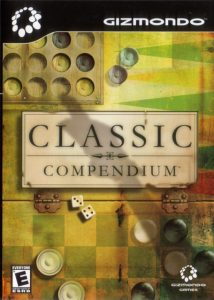 | 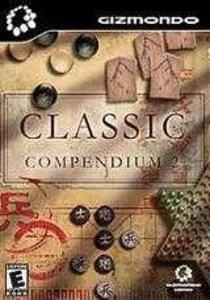 | 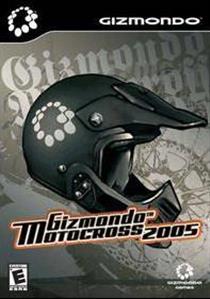 | 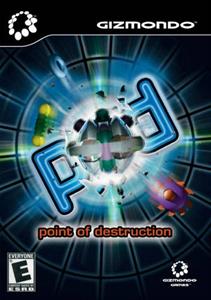 | ||||
| Classic Compendium | Classic Compendium 2 | Gizmondo Motocross 2005 | Point of Destruction | ||||
 |  | 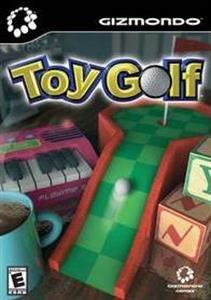 | 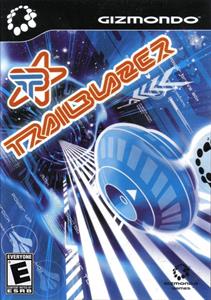 | ||||
| Richard Burns Rally | Sticky Balls | Toy Golf | Trailblazer |
European Exclusive
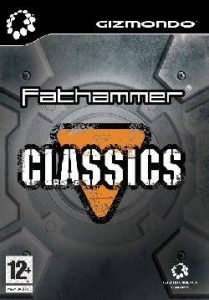 | 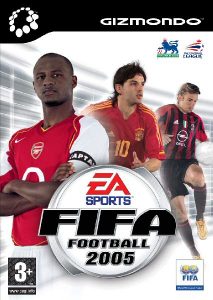 |  | 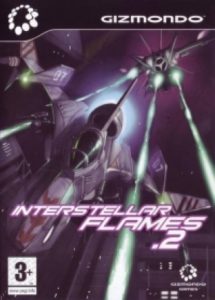 | ||||
| Fathammer Classics Pack | FIFA Football 2005 | Hockey Rage 2005 | Interstellar Flames 2 |
Other Cartridges
Only one other type of cartridge exists for the console. It is a GPS navigation system that came bundled with the maps of a region. The most common one is the United Kingdom version. A West Cost US version was also confirmed to exist with maps of Oregon, Idaho, California, Utah, Arizona, Alaska and Hawaii. Three other region were announced, but haven’t been found yet (East Coast, Mid-West, and South West). Each of the US released were priced as suggested retail price of $169, as well as entire USA option for a suggested retail price of $249.
 | 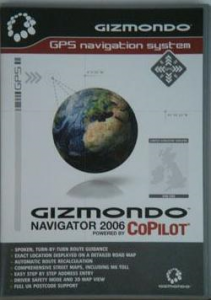 | ||
| Gizmondo Navigator 2006 CoPilot – West Coast US | Gizmondo Navigator 2006 CoPilot – United Kingdom Version |
Unreleased Cartridges
As the console was cancelled very early, a lots of game were still in development. A few of them even had pre-release demo. Bellow, here’s a list of known pre-release cartridges floating around.
 |  |  | |||
| Colors | Agaju | Catapult | |||
 |  |  | |||
| Carmageddon | Hit and Myth | Chicane | |||
 |  |  | |||
| Supernaturals | Kiosk Demo (USA) | Pre-Release Game Demo |
Technical Specification
- Display: 72 mm (2.8 inch) TFT screen
- Resolution: 320 × 240 pixels
- CPU: Samsung ARM9 processor running at 400 MHz
- Graphics: Nvidia GoForce 3D 4500 with 1.2 MB 128-bit SRAM
- RAM: 128 MB 16-bit DDR
- ROM: 64 MB
- OS: Windows CE 4.2
External Reference
As I mentioned in the prelude, this story is very complex and although I try to capture the important even, there’s still a lot that can be said about this sage. The full details of this story from a financial perspective called ‘Gizmondo – Inside The Eye Of The Tiger‘ was publish on Game set Watch by Simon Carless. I highly encourage you to read the full article as it includes a ton of information not presented here.
Another excellent article is the Interview of Carl Freer by Ellie Gibson in the article called ‘A horse named Gizmondo: The inside story of the world’s greatest failed console’ on Euro Gamer.
The rest of the information came from the SEC filling and various press release.
.

